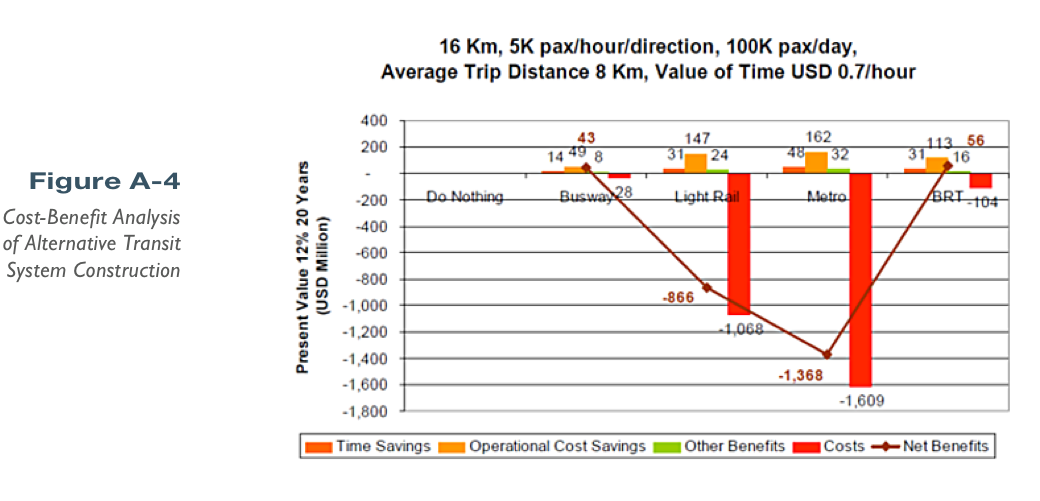FEDERAL TRANSIT ADMINISTRATION
Introduction
The purpose of this effort, sponsored by the Federal Transit Administration (FTA), has been to foster a dialogue among peers at transportation and planning agencies about their experiences with promoting public transit and, in particular, the challenges they face related to bus rapid transit (BRT) projects, as well as the solutions that they have developed in response. Agencies from dozens of large cities around the United States participated in this peer-to-peer exchange and more can benefit from this effort via this report, which provides a synthesis of key findings and recommendations.
This was an important and valuable endeavor, given the increasing use of BRT service around the world over the past 25 years, and its recent proliferation in U.S. cities in particular. BRT has generated great interest among large U.S. cities as they look for ways to improve mobility and make more efficient use of their street space, at a relatively low cost. Projects such as the Metro Rapid system in Los Angeles, the HealthLine in Cleveland, and the Silver Line in Boston demonstrate the potential benefits of BRT.
While there has been substantial success on these projects, the size and density of many U.S. cities create unique challenges for implementing BRT, as does the age of the underlying infrastructure in many older cities. Issues such as traffic impacts, physical separation, and utility conflicts are of great concern and can often inhibit the fast and effective implementation of BRT in large cities, particularly within the central business district (CBD) or with mature road infrastructure and street grids developed more than a century ago. Large cities can also face unique challenges in areas such as public outreach, construction techniques, and interagency coordination. As major cities in the United States, Canada, and around the world have struggled with these issues and developed solutions, they have identified certain ideas and actions that have applicability in other locales facing similar challenges. Convening practitioners from these cities created an unparalleled opportunity to share lessons learned and strengthen BRT projects around the country.
The practitioner discussions convened for this project were complemented and supplemented by presentations and advice from outside experts in various relevant disciplines, including engineering, marketing and public outreach. These experts helped to frame the issues, discuss solutions used around the world and throughout the country, and provide expert opinions on the applicability of various options in different local contexts. This exchange took place through a series of in-person workshops, held in three different U.S. cities. It has been documented by the research team in order to develop a compendium of the discussions, including key findings, the options discussed and conclusions reached, and this final summary. As a result, other practitioners and researchers beyond the workshop participants also stand to benefit from access to these materials.
In organizing the workshops, the Rudin Center for Transportation Policy and Management at New York University/Wagner supported FTA’s objective of addressing the unique barriers to the implementation of exclusive BRT running ways on the streets of highly-congested, large cities. To support that objective, FTA seeks to:
- Identify agencies, economic enterprises, and other parties with a vital interest in promoting the more efficient use of traffic lanes.
- Engage such agencies and to develop cooperative strategies among them based on shared goals and measurable economic costs and benefits.
- Support these strategies with engineering, economic, and planning expertise and documentation.
- Utilize the most advanced technology, financial instruments, and management techniques.
- Conduct and facilitate workshops and other exchanges among key agencies.
- Report findings plainly and quickly to FTA, the National Association of City Transportation Officials (NACTO), member cities, and the public.
- Reach out to interested large city agencies, domestically and internationally.
About the Federal Transit Administration
fta.dot.gov
“FTA is one of 11 operating administrations within the U.S. Department of Transportation with over 500 employees located in Washington, DC and 10 regional offices across the nation. As authorized by the Safe, Accountable, Flexible, Efficient Transportation Equity Act: A Legacy for Users of 2005 (SAFETEA-LU), the FTA provides stewardship of combined formula and discretionary programs totaling more than $10B to support a variety of locally planned, constructed, and operated public transportation systems throughout the United States. Transportation systems typically include buses, subways, light rail, commuter rail, streetcars, monorail, passenger ferry boats, inclined railways, or people movers.”
Tags: BRT, Bus Rapid Transit, cost benefit, Federal Transit Administration, FTA







 RSS Feed
RSS Feed